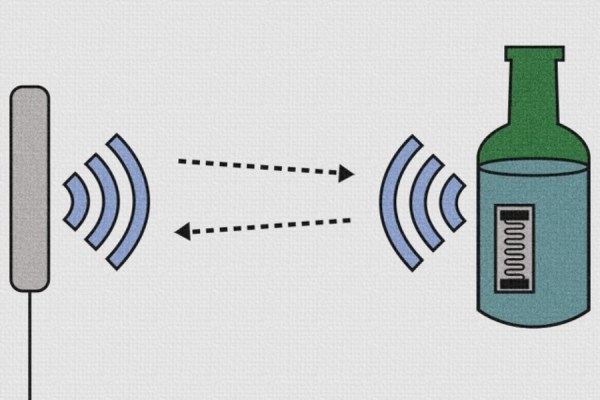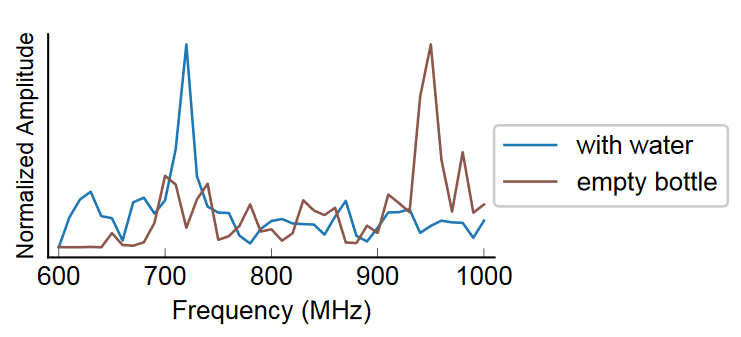If a food item isn’t safe to eat, it’s best to find that out before someone eats it. But manual testing of every jar and bottle isn’t possible, even when a threat, like the recent baby food scare, is known. MIT researchers have found a way to check many items instantly, non-invasively and from a distance — using the RFID tags many products already have.
RFID, or radio frequency identification, uses a tiny antenna embedded in a sticker or label that’s activated and powered by radio waves at a very specific frequency. When a transceiver sends out a 950Mhz signal, the RFID tag wakes up and re-transmits a slightly different signal identifying itself. Products that announce themselves? Convenient for doing inventory!
What the researchers found was that this return signal, outside the actual information-bearing part, can be affected by the actual contents of the product, since the radio waves have to pass through them. Consequently, a jar full of pasta sauce and one full of olives would produce different signal profiles — as would an untouched jar of baby food compared with one contaminated with melamine.
“It’s almost as if we have transformed cheap RFIDs into tiny radio frequency spectroscopes,” said Fadel Adib, co-author of the paper describing the new system, in an MIT news release.
The problem is that these differences can be very minor and it’s not like they’ve been documented anywhere — this is the first time anyone’s tried this. So naturally, the team turned to machine learning. They trained up a model that can tell with confidence what a signal profile corresponds to, with the minor variations that come from, say, slight differences in orientation or glass width.
Right now the system, which they call RFIQ, can tell the difference between pure and melamine-contaminated baby formula, and between various adulterations of pure ethyl alcohol. That’s pretty much everything on my shopping list so I’m set, but obviously the team would like to have it apply to many more products. Now that the method has been shown to work, that’s the plan.
The task will only get harder, as things like environmental variables (shelves) and other wireless interference add to the problem. But machine learning algorithms are good at plucking signal out of the noise, so with luck the technique will work without too much trouble.
You can read the full paper documenting the RFIQ system here (PDF).

